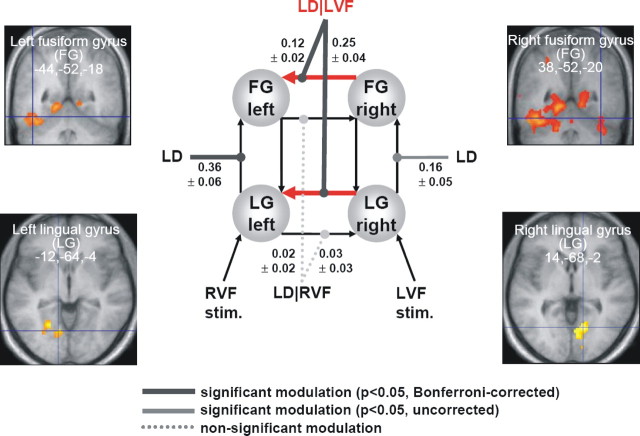Figure 3.
Summary of the group results for the optimal four-area ventral stream model (T×S/T). This model indicates that interhemispheric connections are modulated by the LD task but conditional on the visual field of stimulation (LD|VF). Furthermore, there is a highly significant asymmetry in the strength of interhemispheric modulations (see Results). This indicates asymmetric information transfer from the nondominant right to the dominant left hemisphere (red arrows). The average modulatory parameter estimates ± SEs are shown alongside the modulatory inputs. Dark gray, Significant effects surviving Bonferroni's correction; light gray, significant effects not surviving Bonferroni's correction; dotted lines, nonsignificant effects (for details, see supplemental Table S5, available at www.jneurosci.org as supplemental material). For clarity, this figure shows only the modulatory parameters; the values of all other parameters can be found in supplemental Table S6 (available at www.jneurosci.org as supplemental material). The insets display the results from the random effects SPM analysis together with the group coordinates of the regions included in the model. Activations in left and right LG and left FG are shown at a threshold of p < 0.05, cluster-level corrected (with p < 0.001, voxel-level cutoff). Left and right LG activations are additionally masked by the main effect of visual field (RVF > LVF and LVF > RVF, respectively). The right FG activation is displayed at an uncorrected threshold of p < 0.01.

